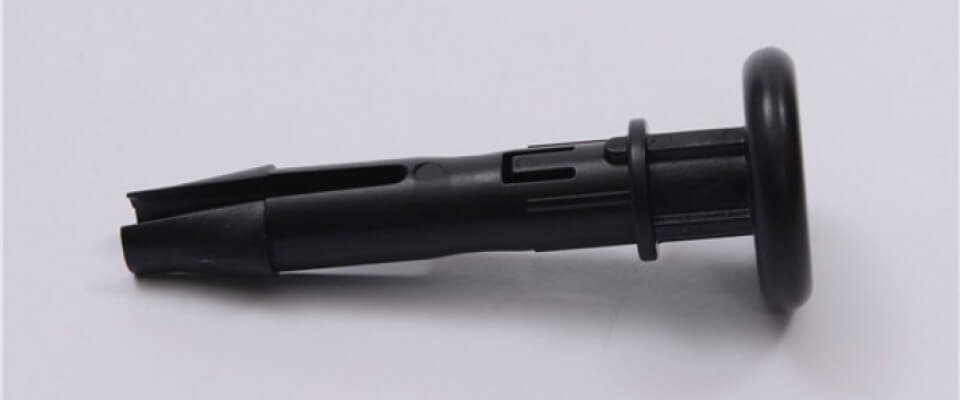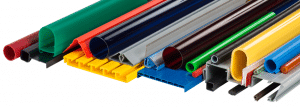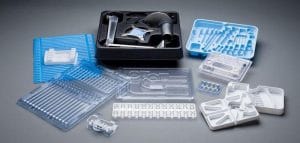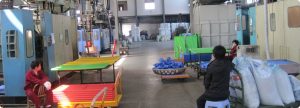
Injection Molding
Most plastic parts are manufactured through injection molding – injecting hot molten plastic under high pressure into molds before cooling and solidifying in their shape as part of this process. Its name describes this procedure perfectly!
Injection molding is typically a quick cycle process that enables large quantities of parts production with tight tolerances at short notice. Molds may also be used to produce structural elements and assembly components like ribs and bosses for assembly purposes.An injection molding mold costing $60,000 would add $50 per part, should only produce 1,000. Therefore, large orders tend to offset this high mould cost.
This mold would contribute $0.12 towards the part cost when producing 500,000 parts, however modifications to it can become very expensive due to product design changes or when large automotive components require expensive presses and molds for assembly.

extrusion

A continuous profile is formed by extruding material that passes thru a die as it continuously cools and solidifies to form a straight, continuous profile.
The extrusion process is primarily used for the production of sheets, films, and pipes, but it also produces profiles used in applications such as vehicle trim, shelf price holders, and display frames.
Extrusion dies tend to be relatively inexpensive for simple profiles; however, they are unlikely to contribute significantly to product cost.Additional work like drilling holes or notches will add to the cost of final product. [divider_top]
Thermoforming
Thermoforming creates shaped plastic objects from a heated sheet of thermoplastic that has melted enough to conform to an open form when pressured or pulled.
When the sheet is stretched over the form or mold, it causes the wall to thin, especially along the sides of deep-drawn features. The cost of the mold or forms used in this process is cheaper than the cost of similar injection molds.
Its cost is mainly due to the fact that material bought as sheet stock is very costly. Material selection is limited to extrusion grades. Thermoforming can produce large parts on relatively inexpensive molds and equipment.
There is a great deal of variation between secondary operations. Thermally formed parts usually need to have excess sheet removed from the part perimeter. This process cannot produce features that protrude from the part surface such as ribs and bosses. Additional machining. is required.

Blow Molding
The blowing molding process is used to create hollow items such as bottles, jars, and light bulbs.
Depending on the design, hollow shapes such as automotive air ducts and gasoline tanks can be made through the process. It is also possible for the thickness of the wall to vary during processing.
Part geometry determines mold and equipment cost, which in turn can be higher than for injection molding. Features such as ribs and bosses cannot be produced by blow molding.
The two types of blow molding that are most commonly used are extrusion and injection. An extruded tube is pepped between mold halves in a process known as extrusion blow molding.
The high pressure air is forced into an expanded tube and pressurized against hollow walls until it cools as a thin-walled hollow form. The vestiges are then removed via a grasping process.
By introducing air pressure into a still-soft molded shape and performing injection blow molding, air pressure is applied to expand the shape into a hollow mold so as to eliminate pinch-off remnants and facilitate molded features on the open side, such as screw threads for lids.

[divider_top]
Rotomolding
During rotational molding, a resin usually called thermoplastic powder is placed within a mold, where it is heated before being rotated around on two axes. This process is repeated until the resin is fully melted and the hollow cylindrical shape forms.The mold is then cooled, solidifying its shape while it is still rotating.
Large hollow shapes can be hollowed out with this method. The process can also be used to create decorative street light globes or hollow yard toys. The cost of producing molds is low, and the process can produce large and small parts as well.
